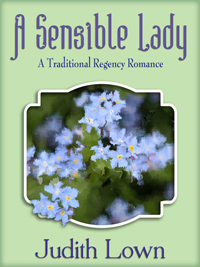So You Want To Write A Regency Romance?
No problem.
Dress some ladies in high-waisted, low-necked gowns with narrow skirts and puffed sleeves. Have them say “lud.” Be sure that the heroine is a) a saucy miss, b) pluck to the backbone, c) a minx. Her best friend has “more hair than wit.”
Gentlemen must wear high shirt points with elaborately folded neck cloths, coats, and inexepressibles molded to reveal all masculine attributes. The hero may or may not be titled, but he doesn’t suffer fools gladly.
Mix all ingredients in London’s Mayfair, a stately country home, an idyllic village—or any combination thereof.
Voilà, you have a Regency Romance!
Not. So. Fast.
It is true that historical fiction has a built-in escape element that recommends it to recreational readers. Different clothes. Different vocabulary. More horses. No cars. But for real escape, characters must be genuine, coping with life situations that are believable for the given time period according to the customs and rules of that time period. The more the historical fiction writer is immersed in the period, the more believable the characters and plots will be. And the only way to immerse oneself in a given historical period is by research. The first step in this process is learning your historical period. Here are some basic facts about the Regency.
The narrow definition of Regency is years 1811-1830, the time when George III was still living but was declared insane, so his son, the Prince of Wales, was named Regent. It’s possible to write a “Regency” that takes place in 1805. Fashions, manners and morals were the same. But the writer had better know that Prinny was just the Prince of Wales at that time.
Know what was going on in the larger world. When the Regency began, England and France had been at war since 1793, with only a brief respite during The Peace of Amiens, from 1801-1803. Napoleon’s final defeat did not come until the Battle of Waterloo, June 18, 1815.
It is quite possible to write many books that take place during this time and never mention one of these facts, but you still need to know them. For example, you probably don’t want to have anyone eloping to Paris from England from 1803 until after June 18, 1815.
I wanted my first Regency, A Match for Lady Constance, to be light hearted and frivolous, so I purposely set in 1816. That was the first Season in years that had no shadow of war in the background.
On the other hand, my new novel, A Sensible Lady: A Traditional Regency Romance, published by eFrog Press, takes place toward the end of the war. Beginning in 1813, while the war is still being waged, its tone is introspective. There is a sense in which the affirmation of life with which the book ends is punctuated by the end of war in Spain.
What are some of the important background facts that must be taken into account in other historical periods? How do they play against your plots?
Tags: historical romance, Regency romance, traditional Regency

